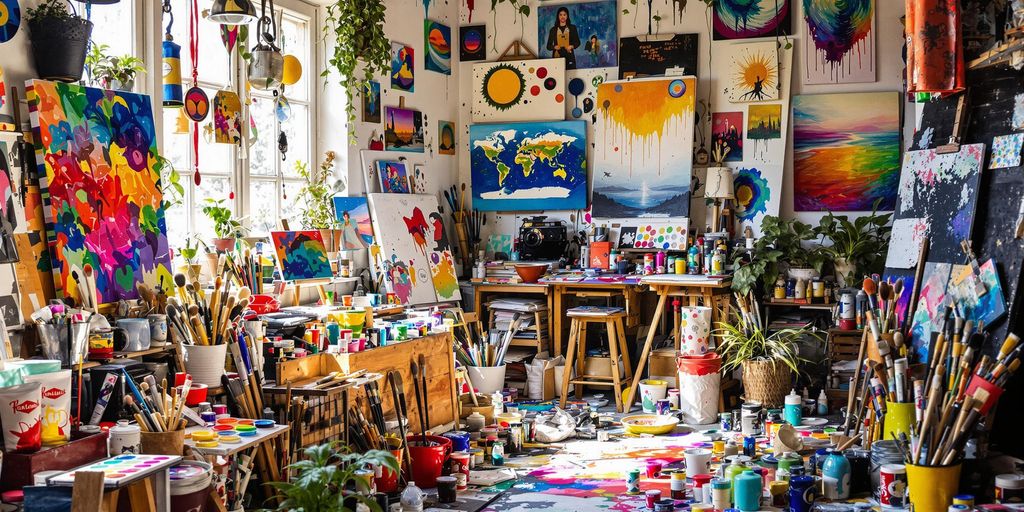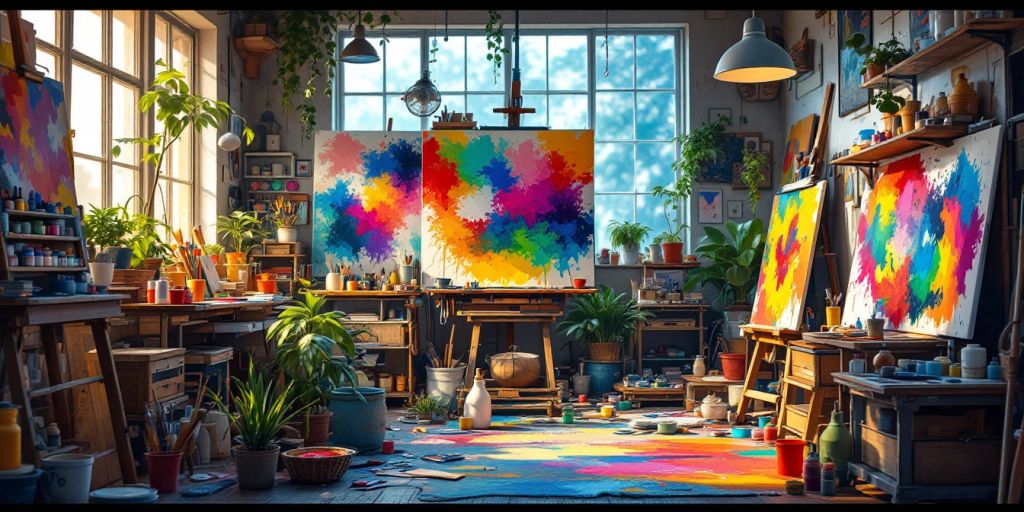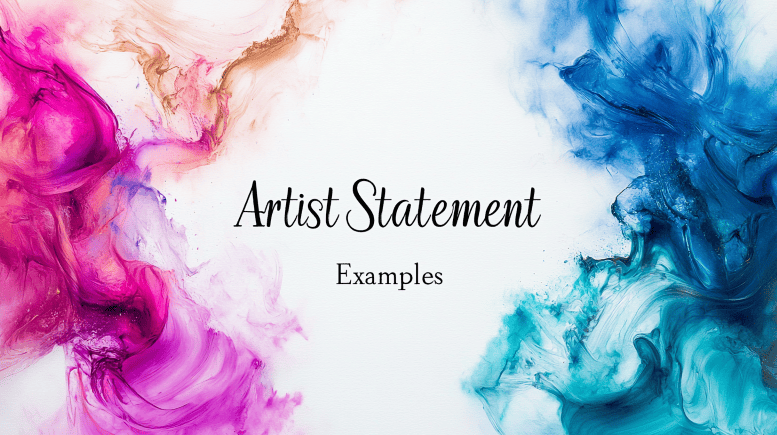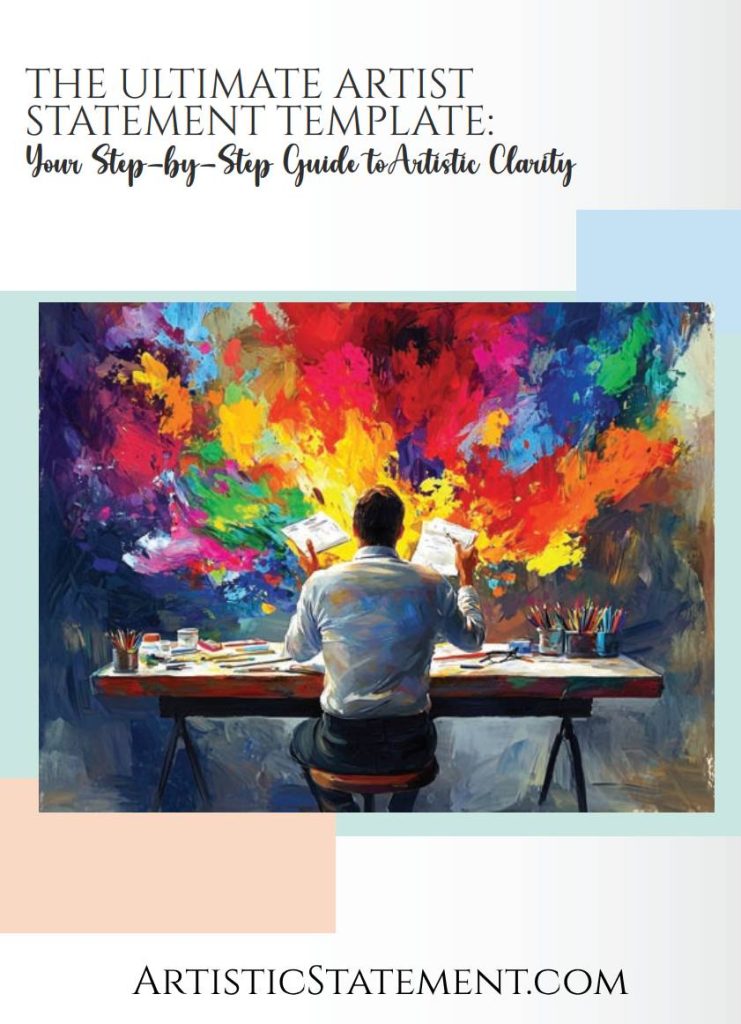As a group of artists, we’ve learned that effectively communicating our artistic vision and passion to our audience is crucial. An artist statement is a key tool for doing that. In this article, we’ll share our step-by-step process for crafting an artist statement that captures the essence of our work and resonates with viewers and potential patrons. First, let’s clarify what an artist statement is. It’s a concise piece of writing, typically between 100 to 300 words, that explains our art to others. It’s not a comprehensive biography or a detailed critique of our work; instead, it’s a snapshot that provides context and invites the reader to engage with our art on a deeper level. So, how do we create a powerful artist statement? Let’s break it down into manageable steps.
Step 1: Understand the Purpose and Audience
Before we start writing, it’s essential to understand who will be reading our artist statement and why. Our statement might be read by gallery owners, collectors, art enthusiasts, or even jurors for art competitions or grant applications. Each audience has different expectations, so tailoring our statement accordingly can be beneficial.
Key Takeaway: Our artist statement is a marketing tool to connect with our audience and explain our art in a way that resonates with them.
Tip: Consider who will be reading our statement and adjust the language and tone accordingly. For a more formal setting like a grant application, we might want to use a more professional tone, whereas for a local exhibition, a more casual approach could be suitable.
For example, when we applied for a prestigious art grant, we made sure our statement was polished and formal, highlighting our artistic achievements and the significance of our work. For a community art show, we used a more relaxed and personal tone to better connect with the local audience.
Think about it like this: Would we wear the same outfit to a job interview as we would to a friend’s birthday party? Probably not. Similarly, our artist statement should be dressed appropriately for its audience. This approach ensures we meet the expectations of different contexts, whether it’s a juried competition or a casual gallery opening.
Step 2: Reflect on Our Art
To write a powerful artist statement, we need to have a deep understanding of our own work. This involves reflecting on our artistic vision, the themes we explore, our techniques, and how our personal experiences influence our art.
Key Takeaway: Dig deep to understand what drives our artistic practice.
Tip: Ask ourselves a series of questions to get to the heart of our art:
- Why do we make art?
- What do we want to communicate through our work?
- What are the recurring themes in our work?
- How do our personal experiences influence our art?
- What emotions do we want to evoke in our viewers?
- What techniques or materials do we prefer, and why?
- How does our art fit into the broader art world or specific art movements?
Write down our thoughts and feelings about our art. We might find it helpful to keep a journal or sketchbook where we can record ideas, inspirations, and reflections on our work. These notes can be a valuable resource when crafting our artist statement.
Exercise: Make a list of adjectives that describe our work, and think about why those words apply. For instance, if we describe our work as “vibrant,” explain what makes it vibrant and how that relates to our artistic intent.
Let’s take Andy Yoder, a sculptor, as an example. His statement starts with: “Many people take great comfort in the bathroom towels being the same color as the soap, toilet paper, and tiles. It means there is a connection between them, and an environment of order. Home is a place not only of comfort, but of control. This sense of order, in whatever form it takes, acts as a shield against the unpredictability and lurking chaos of the outside world. My work is an examination of the different forms this shield takes, and the thinking that lies behind it.” Here, Yoder reflects on the concept of order and control in home environments and how his sculpture examines that idea. This shows a clear understanding of his artistic themes and how they relate to everyday life.
So, take some time to really think about what our art means to us and what we want others to take away from it. This reflection is crucial for creating a statement that feels authentic and meaningful.

Step 3: Find Our Voice
Our artist statement should sound like us—our unique voice and personality should shine through. This authenticity will make our statement more relatable and memorable.
Key Takeaway: Write in a way that is authentic to us.
Tip: Imagine we’re explaining our art to a friend or someone we trust. Use language that feels natural and comfortable to us.
Caution: Avoid using overly academic or technical language that might alienate our audience. Art jargon can be confusing to those outside the art world.
Common pitfalls to avoid:
- Trying to sound too intellectual or using big words to impress.
- Using clichéd phrases that don’t add meaningful content.
- Being too vague or general; be specific about our art.
For instance, instead of saying “Our art is about beauty,” specify what kind of beauty and why it’s important to us.
Nancy McIntyre, a silk screen artist, writes: “Celebrate the human, the marks people make on the world. Treasure the local, the small-scale, the eccentric, the odd, the unique, the personal. I want to capture the essence of a place or a person, to tell a story.” Her statement is poetic and personal, reflecting her passion for capturing the unique aspects of people and places. This distinct voice makes her statement engaging and memorable.
Another example is Dawn Benedetto, a jeweler, who says: “Poppi is my fun and clever alter ego. It’s a line of jewelry that doesn’t take life too seriously…” This playful tone matches the nature of her work and makes her statement stand out.
So, find our own unique way to express our artistic identity and let that guide our writing. Remember, our statement should feel like it’s coming from us, not from someone else. This personal touch is what will make it resonate with our audience.
Step 4: Structure Our Statement
A well-structured artist statement is easy to follow and keeps the reader engaged. It should have a clear beginning, middle, and end.
Key Takeaway: Start with a compelling first sentence that grabs the reader’s attention, then provide more specific details.
Tip: Begin with a hook—a personal anecdote, a thought-provoking question, or a striking statement related to our art.
Example: Diana Chamberlain, a ceramicist, starts her statement with: “I work in porcelain for its suppleness, delicacy and strength. Porcelain’s willingness to be transformed…” This opening immediately tells the reader about her preferred medium and its qualities, setting the stage for more in-depth discussion.
In the body of the statement, provide more details about our artistic process, inspirations, and the meaning behind our work. Keep it concise and focused.
A suggested outline for our artist statement could be:
- Introduction: A brief statement that captures the essence of our art and grabs attention.
- Body: Explanation of our artistic process, inspirations, and the themes we explore.
- Conclusion: A summary or a forward-looking statement that leaves a lasting impression.
Remember, our statement should be no longer than one page (about 100-300 words). Brevity is key in maintaining the reader’s attention.
Flexibility in structure is acceptable, but ensure that our statement flows logically and that each part supports the overall message.
Let’s create a hypothetical sample statement to see how this structure works.
Suppose we’re a painter who focuses on landscapes. Our statement could look like this:
- Introduction: “I am captivated by the ever-changing beauty of nature, and my paintings are a celebration of that wonder.”
- Body: “Through my brushstrokes, I aim to capture the fleeting moments of light and color that make each scene unique. I am inspired by the works of the impressionists, particularly Claude Monet, and strive to bring a similar sense of vibrancy and movement to my own work. Each painting is a study in the interplay between light and shadow, seeking to evoke a sense of awe and connection with the natural world.”
- Conclusion: “As I continue to explore the landscapes around me, I hope to share my passion for nature and encourage others to see the world with fresh eyes.”
This statement starts with a compelling introduction, provides details about the artistic process and inspirations in the body, and ends with a forward-looking statement.
Think of it like a good story: it has a beginning that hooks you, a middle that keeps you interested, and an end that leaves you satisfied. This structure helps ensure our statement is engaging and effective.

Step 5: Edit and Revise
Writing a powerful artist statement is an iterative process. It’s important to review and refine our statement multiple times to ensure it accurately represents our work and is clearly expressed.
Key Takeaway: Good writing is rewriting.
Tip: Take time to review our statement, and consider getting feedback from a diverse group of people, including art friends, non-art friends, and mentors.
Technique: Read our statement aloud to catch any unclear phrases or awkward sentences. This can help us identify areas that need improvement.
Also, make sure to check for spelling and grammatical errors, as these can distract from the content of our statement.
Taking breaks between writing sessions can help us gain a fresh perspective. Sometimes, stepping away from our work and coming back to it with a clear mind can reveal aspects that need further refinement.
Tools like Grammarly can be useful for catching grammar and spelling mistakes, but don’t rely solely on them; human feedback is invaluable.
Remember, our statement should be up-to-date and reflect our current artistic practice. If our work evolves, our statement should evolve with it.
Don’t be afraid to make changes, even if we’ve already shared our statement. It’s okay to update it as our art and perspective grow. This ongoing process ensures our statement remains relevant and reflective of our artistic journey.
Step 6: Finalize and Present
Once we’re satisfied with our artist statement, it’s time to present it to the world. Whether it’s for a gallery exhibition, an art competition, or our personal website, make sure our statement is polished and ready to represent us and our work.
Key Takeaway: Our statement should be a true reflection of our art and our artistic journey.
Tip: Keep our statement updated and relevant to our current body of work. As our art evolves, our statement should be revised to reflect those changes.
Different platforms may require different formats. For example:
- On our website, we might have a dedicated page for our artist statement.
- For exhibition catalogs, it might be included alongside images of our work.
- In press releases, a shorter version or excerpt might be more appropriate.
Ensure consistency in the message across different platforms, but tailor the presentation as needed. This flexibility helps us reach our audience effectively, whether online or in print.
In conclusion, creating a powerful artist statement is a thoughtful process that requires self-reflection, clear communication, and careful editing. By following these steps, we can craft a statement that not only showcases our art but also connects with our audience on a deeper level.
So, go ahead, start reflecting, find our voice, structure our thoughts, edit with care, and present our statement with confidence. Our art deserves it!
Table: Summary of Artist Statement Steps and Key Takeaways

| Step | Key Takeaway | Tip/Example |
|---|---|---|
| Understand Purpose | Our statement connects with our audience and explains our art effectively. | Tailor tone for formal grants vs. casual local shows, like using professional language for grants. |
| Reflect on Our Art | Dig deep to understand what drives our artistic practice. | Ask questions like “Why do we make art?” and keep a journal for inspirations. |
| Find Our Voice | Write authentically, using clear, natural language that avoids jargon. | Imagine explaining to a friend, like celebrating “human, the marks people make.” |
| Structure Our Statement | Start with a hook, detail process, and keep it concise (100-300 words). | Use a structure: introduction, body, conclusion, like our hypothetical landscape painter example. |
| Edit and Revise | Good writing is rewriting; get feedback and ensure no typos. | Read aloud, take breaks, and use tools like Grammarly, plus human feedback. |
| Finalize and Present | Our statement should reflect our current art and be presented appropriately. | Update regularly, format for websites or catalogs, ensuring consistency across platforms. |
Click Here To Download a Free Artist Statement Template

Key Citations